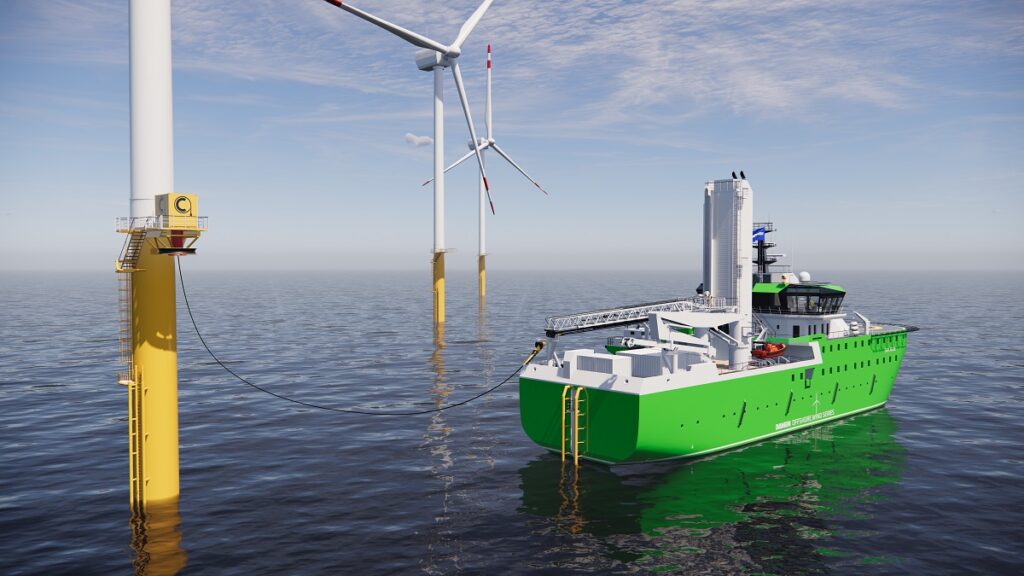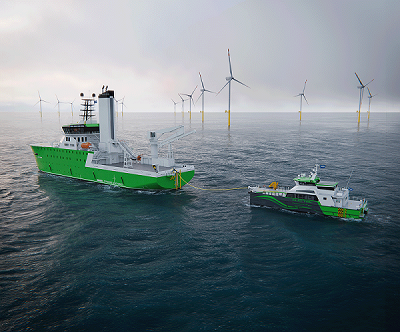Damen Shipyards Group has developed a new concept for offshore charging, offering a way to dramatically reduce emissions during the operational phase of an offshore wind farm.
The system envisages a fully electric crew transfer vessel (CTV) which can charge at either a turbine or one of Damen’s Commissioning Service Operations Vessels outfitted with a charger.
With the infrastructure for turbine mounted chargers not yet widely available, vessel-to-vessel charging offers CTV owners and operators an opportunity to invest in the sustainable technology of the future, at the present time, as Mark Couwenberg Product Manager Service Operations Vessels at Damen explains:
“Offshore charging is an essential feature for a fully electric CTV operation. Typically, this would be dependent on charging infrastructure being present at an offshore wind farm. Our unique position as builders of both CTVs and CSOVs led us to the idea of placing the charging scope within our assets.
“This can be done with both a conventional, diesel-powered CSOV, or with a fully electric version. Of course, from an emissions reduction perspective, the latter is the more preferable option.
“However, such a solution makes it possible for CTV operators to invest today, in preparation for the wider distribution of full electric CSOVs tomorrow. We believe this could give a considerable boost to the maritime energy transition.”
Installing a large battery system on board a CTV is a challenge, given the weight and space restrictions. Installing the system to the much larger, less space sensitive CSOV gives the smaller vessel access to the energy it requires without compromising on capabilities.
Using the CSOV as a charger host offers further advantages. For one thing, the stern of the vessel is lower than a turbine, which provides the vessel with easier access to the charger.
Additionally, unlike the turbine, the CSOV is able to change its position, enabling the CTV to charge in the most sheltered position with regards to wave conditions.
The charging system that Damen has applied to its concept is developed by UK-based MJR, a specialist in offshore charging systems. The CTV would connect via a bell mouth that catches the charger that is lowered from a reel on the aft deck of the CSOV.
Following personnel disembarkation, the vessel could connect using a highly automated, safe process. It is expected that charging could take place in 2-3 hours, depending on the operational profile.



